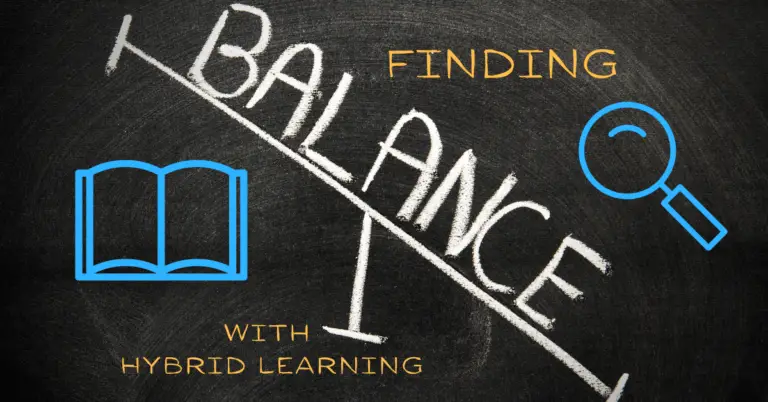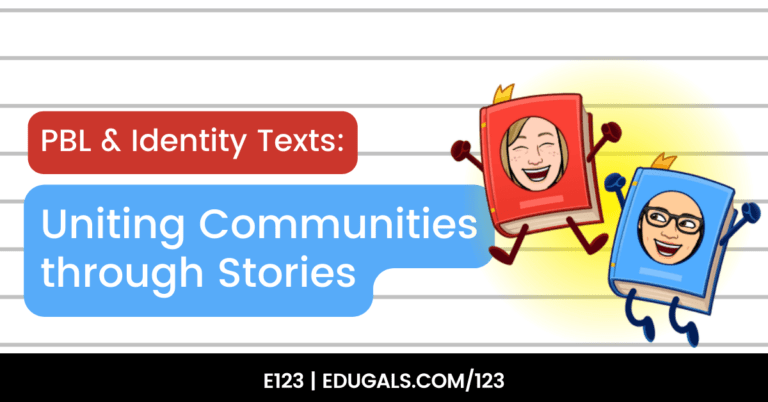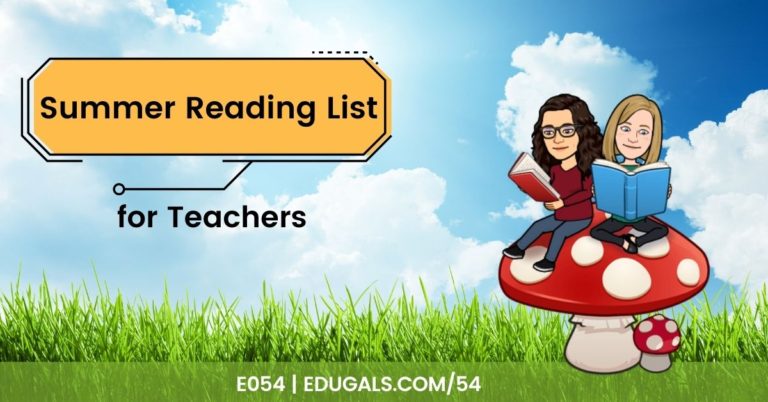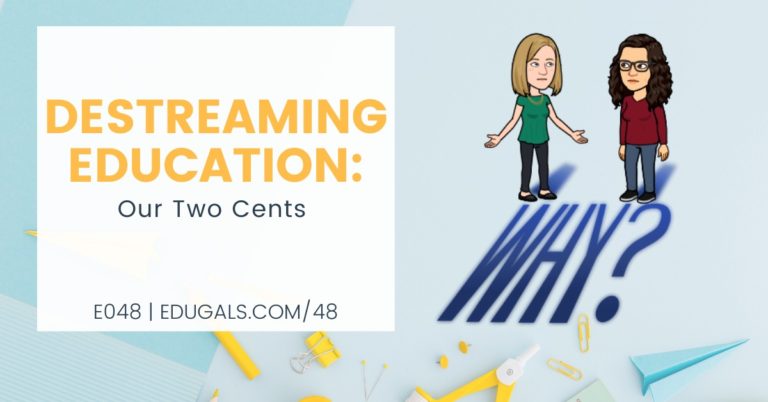[podcast_subscribe id=”7428″]
In this episode, we are joined by a special guest – Caitlin Kemp. We are going to be asking her some questions about her experience in the virtual school last year, and what tools and strategies she will be bringing with her to the classroom this year.
If you like what you hear, then share this episode with a colleague or friend, and make sure you subscribe so that you don’t miss out on any new content! If you are able, consider supporting the show by buying us a coffee!
We would love to hear from you – leave a comment here, OR check out our FLIPGRID!

Show Notes
This week, we are super excited to have Caitlin Kemp on our show! We have worked with Caitlin for a number of years. She is a secondary teacher from Ontario that taught in the virtual secondary school last year, and is returning to the physical classroom this year. She has a wealth of knowledge from her virtual experience!
Tell us about yourself, Caitlin!
Caitlin volunteered last year to teach virtually. She had taught e-learning for about 6 years, and has her Google certifications, so she felt comfortable volunteering. That being said, she really missed seeing and interacting with students in person, and so she is returning to the physical classroom this year.
She is also a wife and a mom to two small children, and they keep her busy!
What have you learned throughout the year?
Last year we did quadmesters, which meant really long classes. This year’s modified semester model means that we still have those long classes. Last year, many of the teachers learned how to chunk material and lessons really well to help fit the longer class times.
Throughout the year, Caitlin really learned how to chunk material effectively, and how to make it more engaging while online. She loved to use various virtual tools, such as Jamboard, to make a variety of activities.
While the classes were super long, she never felt rushed, so she felt she had more time to do minds-on activities, fun Kahoots, mindfulness and wellness activities. We are always told how important these activities are, but often felt rushed during the traditional 75-minute classes. These longer classes are the perfect opportunity to incorporate more of these activities!
This idea of activities and wellness/mindfulness she will definitely bring with her back to the physical classroom.
For those interested, Caitlin used Headspace. There are many different activities available through this tool, and it really helps students, and teachers, to feel relaxed and to destress.
Silver lining to longer learning blocks? More activities and lessons that can incorporate more about who our students are as people versus just focusing on curriculum.
Remember, there are no curriculum police. Look at the overall expectations, and make sure you are hitting these expectations, but loosen up a bit about hitting every single specific expectation in the curriculum docs.
Math and science teachers struggle a bit more with that concept of loosening up on all of the specific expectations, but it really is a great idea to sit down, examine the curriculum and figure out which items are the most important pieces that must be taught, and which are nice to be taught.
The Modern Classroom Project is a great place to start! Prioritize and find a way to give yourself a break!
How did students react to mindfulness?
First time, they were a bit confused about why they were doing it in English class, but the more that they did it, the more they appreciated it! It really helped to destress and gauge where students are at with their learning and wellness.
To put it into perspective, this year’s grade 11 students have really only had one semester of traditional high school. This year is still stressful, as the pandemic is still happening, so we need to keep that in mind as we plan.
What is your advice to teachers that are just entering this education world?
- Ask for Help! Don’t be afraid – many teachers are willing to help and share their resources. We are all trying to revamp our curriculum and make good changes to our courses, so now is the time to share your ideas, and also ask for help if you need it.
Don’t wait until the last minute when you are desperate for help! Ask as you go, and build those relationships with fellow staff so that you aren’t stressed even more during reporting periods, etc. - Find a mentor! Find someone who would be willing to help you and mentor you. Not everyone is able to during these crazy times, but find someone who is. And make sure you accept any and all resources and advice they are willing to share!
- Learn how to best leverage your technology. There are so many apps and tools, and it can be overwhelming. Figure out which ones work the best for your course area and your learners, and continue to use those. Don’t just use tech for the sake of using tech!
Fill your toolbox with the ones you are going to use frequently, and that will serve the right purposes for you and your students. When you present a tool, give students a chance to get proficient with a tool before you switch it up to a different tool.
How did you make it work as a department head/leader in a virtual environment?
It was super challenging – staff turnover was high, and some did not want to be teaching in virtual, plus it was a massive staff and student population.
Caitlin was already really active in helping to support staff from a technology standpoint. She was always quick to respond, and she gave sound advice. That helped her to transition to her leadership role.
From there, it was a matter of always reaching out to her department, letting them know that she was there to support them, and building relationships with the staff that were there for most or all of the year.
It was certainly challenging because you can’t see when staff are struggling in a virtual world. It required someone to break the ice and reach out to ask for help. And from there, it requires an email or a virtual Meet to connect. While it isn’t as easy as having an in-person conversation, it did still work.
She regularly offered office hours where people could drop in and chat or ask for help, and sometimes people would take advantage, sometimes not. She also did monthly department meetings to ensure there was a connection among the team.
How will that experience shape how you approach your leadership role this year in a physical school?
As a leader, she definitely wants to continue to be someone that is visible and approachable. She wants to continue to be seen, to get involved, and continue to be in-the-know, so that staff are comfortable approaching her.
She also wants to make sure that staff know that she is available and willing to help support them, however they need that help – technology, CRRP, PD, etc. She feels that her job is to support her department, and help them transition back to school after such a crazy year.
Any tech tools that you would recommend for teachers to check out?
Tools that she loves are: Jamboard, Kahoot, and BreakoutEDU.
BreakoutEDU is an escape room style activity that you can set up in your classroom, or digitally. You can make your own breakout room based on your course/curriculum, or even have students make them as an activity or assignment. The students really engage with this tool, and it’s really fun to watch them as they excitedly solve the breakout room.
She also loves all things GSuite – Slides, Docs, etc.
What are you ditching this year from virtual?
She loved a lot of the things that she learned this past year, so this is a tough question. If anything, she would like to bring some of the interaction back to the classroom, whether that be through chart paper, or in-class activities.
She also isn’t entirely sure how to translate breakout rooms for group work into a classroom of 30+ students. Students are all supposed to be facing the front of the classroom, and aren’t supposed to be moving around in the classroom, so group work is definitely a challenge.
One solution is to geographically organize groups based on where students are sitting. You can still use some of the virtual tools, such as Google Chat, and have students work together on a doc, jamboard, slides, etc.
Alternatively, for fall and spring we could bring students outside, where students could spread out.
Overall, there is nothing that she necessarily wants to ditch! She just wants to find a way to bring those tools effectively into the classroom.
What is your take on Virtual Schools? Should they be a long term solution? What should it look like?
Virtual schools are a great option for the long term. It gives a safe space for students that don’t necessarily feel safe in a physical building. It also allows students to have different, or more varied, course offerings since not all schools are big enough to offer certain courses.
That being said, it isn’t accessible to everyone. Not everyone has access to stable wifi, a device and a separate work space in their house.
She also likes the idea of a physical place, a virtual hub, where students and staff can access wifi, extra help, connection, etc. It doesn’t work for everyone, but it is a great option for students that find that regular school just doesn’t work for them.
A hub is also a great solution for teachers. It’s hard to bounce ideas off of one another, to ask questions or ask for help. By having a hub where teachers can work, you increase collaboration and make build community amongst staff.
What is your biggest takeaway from this past year of virtual?
My biggest takeaway is making space in my classrooms for community building, wellness, mindfulness, and letting go of the curriculum pressure. My job isn’t just to teach them stuff, but to also be a safe space and person for my students.

HUGE thank you to Caitlin for joining us today, and for sharing all of her experiences in the virtual school last year!
We wish her all the best as she returns to the classroom this year in a physical school – we know that she will be amazing, and that she will bring with her a wealth of knowledge that will benefit her students and staff.





